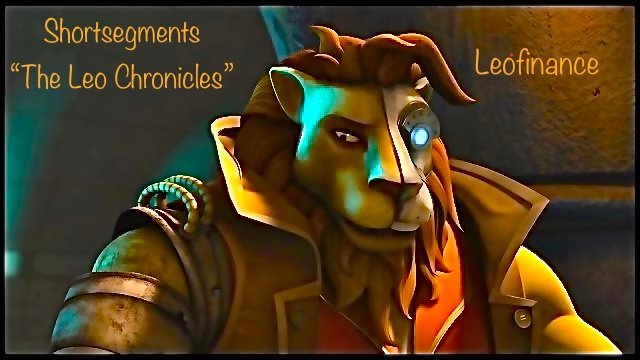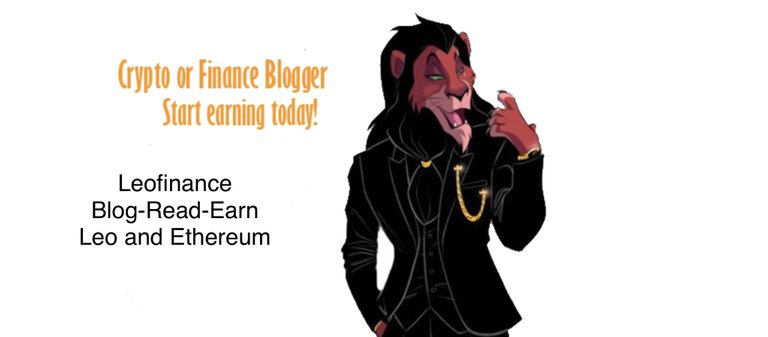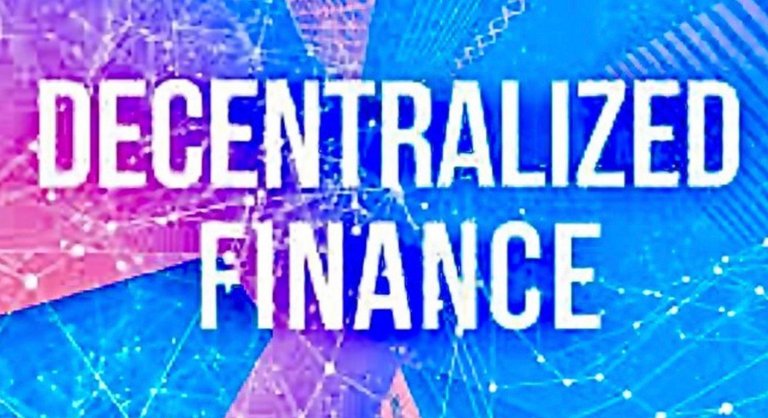Decentralized Finance 101
What is Decentralized Finance?
Decentralized
refers to a system accessible from multiple points, all over the world.
Decentralized
also refers to the lack of a controlling central entity.
Finance
of course refers to money, and the saving, borrowing, lending of money or other stores of value and of course the rules regarding these transactions.
Decentralized Finance
puts these concepts together to create a system of finance, where the saving, borrowing, lending of money or other stores of value can occur, which is
accessible from multiple points, all over the world and for which there is no single controlling central banking staff, but instead it’s controlled by a copy of computer software code.
Why is it popular?
In brief because investors make Money
The equivalent of over 14 billion dollars US is currently locked up in Smart Contracts in less then Ten popular DeFi platforms, both Credit Debt Facilities like the MakerDao, which focus on savings accounts and loans on those savings accounts and cryptocurrency exchanges like Uniswap, which focus on automated market making activities where different cryptocurrencies can be traded and all liquidity is provided by investors who don’t own the exchange, but earn transaction fees for trades, by acting like market makers in a stock exchange by providing assets on both sides of the trades to earn a portion of fees charged for trades.
Terminology for Credit Debt Facilities
You need to understand at a minimum these terms to understand how Loans or CDP’s work in decentralized finance:
#Credit
This means credit cards and loans like those used to buy cars and homes.
#Interest
This is the fee or money you pay the bank for borrowing money in the form of credit cards or loans.
#Stability fee
This is the same as interest.
#Default
You are in default if you don’t pay your credit card bill or loan payments for two or more months. Aldo if the value of your asset falls below a predetermined value.
#Default fee:
The extra money you pay the bank on top of your loan balance if you default.
#Liquidate:
If you default on your loan used to buy your car or home the bank takes your car or house and sells it to pay off your loan.
Liquidation fee
This is the same as a default fee.
#Debt:
The money you owe the bank for credit card balances or loans.
#Credit Facility
This is another name for a bank on a blockchain like the MakerDao or DJED.
#Collateralized Debt product
This is another name for a loan granted you in exchange for the title or ownership papers of your collateral.
#Collateral
This is an asset like a car, home or cryptocurrency, whose ownership papers are held by a bank or credit facility when you borrow money and use the asset as security for the loan.
#Agree with liquidation.
If you offer an asset as security for a loan, you agree the bank or credit facility can sell your asset if you default on your loan or the value of your collateral falls below a certain dollar value.
#Ownership papers:
For a car it’s the title and for cryptocurrency it’s your keys.
Terminology for Automatic Market Maker Exchanges
You need to understand at a minimum these terms to understand how Exchanges or Automatic Market Makers as decentralized exchanges are frequently called.
#Liquidity Provider
one who deposits dollar equivalents of trading pairs into the trading pools in exchange for a portion of the transaction fees paid by traders who trade or swap assets on these decentralized exchanges. Providing Liquidity is profitable and safe, so it is attracting investors from outside of cryptocurrencies usual ranks, and it has resulted in billions of dollars moving into DEFI this year.
#Dollar Equivalent Pairs
A dollars worth of each token is a dollar equivalent pair.
Example
Dollar Equivalent Since the ERC token wrapped Bitcoin represents one Bitcoin and all its value, if Bitcoin is worth 4000 dollars USD and Ethereum is worth 400 dollars USD, then one wrapped Bitcoin, WBTC is worth 4000 dollars USD. Furthermore, in DEFI, since one Bitcoin valued at 4000$ would be worth ten Ethereum worth 400 dollars USD.
In the example above, where for simplicity, I said if Bitcoin was worth $4000.00 and Ethereum was worth $400.00, a Dollar Equivalent Trading Pair would contain One Bitcoin to Ten Ethereum. So if you wanted to provide Liquidity to a Trading Pair on a decentralized trading exchange, you would need to possess both Bitcoin and Ethereum in a ten to one ratio. Fortunately you don’t need a whole Bitcoin or a whole Ethereum, just a ten to one ratio in value.
#Transaction Fees
Suppose you deposit Sun and TRX into a Sun-Trx swap pool on JustSwap.
Noe every time some swaps Sun for Tron on JustSwap they pay a transaction fee. And as a liquidity Provider you get a percentage.
#Transaction Fee Share
Liquidity Provider Pool Share Determines Transaction Fee Share.
Example:
Suppose you have 1000 Sun and 5000 TRX deposited in a Sun-Trx trading pool on JustSwap, and the pool contains 100,000 Sun and 500,000 Trx. Your share: 1000
Total pool 100,000
Your pool share is 1%
So if there were 100$ in transaction fees in 24 hours you get paid 1$ or about 50 Trx at a Trx price of 0.02 $ or 2 cents.
So if you wanted to earn money without selling your cryptocurrency, you could become a Liquidity Provider on a decentralized cryptocurrency swap exchange, like Uniswap or JustSwap. If you become a Liquidity Provider, the platform pays you a percentage of all the transaction fees for swaps or trades done that day, for the trading pair you provide liquidity for.
#Impermanent loss
This term describes the temporary loss of funds, which is occasionally experienced by liquidity providers because of volatility in a trading pair.
Places to earn from Decentralized Finance
While this list isn’t a list of recommendations, it is a starting point for your further study before investing your money.
#MakerDao
#Just
#Uniswap
#Justswap
#Curve
#Sushiswap
Understanding Wrapped Tokens
Native Tokens
To understand wrapped tokens, you need to understand native tokens and non-native tokens.
#Bitcoin is the native Token Bitcoin blockchain.
#Ethereum is the native Token of the Ethereum blockchain.
Only Ethereum tokens can be traded on the Ethereum blockchain, and only Bitcoin can be traded on the Ethereum blockchain, and this rule holds for all other blockchains.
Because only Ethereum tokens can be traded on the Ethereum blockchain and all applications or platforms there, which includes the majority of all decentralized finance opportunities. If you want to use your Bitcoin to make money on Decentralized Finance Applications on the Ethereum blockchain, it has to be Wrapped.
Wrap your token for cross chain trading
So if you want to take advantage of an investment opportunity on another blockchain, where your token is not a native Token, you will need a digital representation of your token, which works on the desired blockchain.
In the case of Ethereum your Token must be exchanged for a special Ethereum token, called an ERC token, which is a native Ethereum blockchain token, which represents your non-native token on the Ethereum blockchain.
ERC tokens
Because the Ethereum blockchain introduced the cryptocurrency world to smart contracts, and people owning tokens from other blockchains desired to trade their tokens on Ethereum. There was a need for what is called Cross Chain trading. Cross chain trading was popularized on the Ethereum blockchain, with what were called ERC tokens. These are the digital representations on the Ethereum blockchain of tokens which are native to another blockchain.
Example :
The ERC token version of Wrapped Bitcoin or WBTC Is an Ethereum blockchain Token, which represents a token Bitcoin, which is the native Token of another blockchain. This process requires the Bitcoin token to be locked in a wallet, and the person who wants to trade Bitcoin on the Ethereum blockchain is given an Ethereum blockchain Token, called an ERC token, to trade on the Ethereum chain. This allows for example Bitcoin to be traded on the application Uniswap. Normally only Ethereum and other Ethereum blockchain native tokens could trade there. But the Ethereum version of wrapped Bitcoin is a ERC token, which is a special Ethereum blockchain native Token, made specifically to represent the value of one Bitcoin on the Ethereum blockchain.
Summary
I have covered what I think are the essential introductory elements of decentralized finance.
It’s definition, essential terminology, examples of the main types and names of decentralized finance platforms for you to explore. In addition I went into detailed explanations including terminology of credit debt facilities, automatic market maker platforms, important concepts like being a liquidity provider,and a brief explanation of wrapping, including native and non-native blockchain tokens and ERC tokens.
Few Experts, but many students and traders
It’s a broad field, and a rapidly changing one also. I believe there are few experts, but many students at various stages of Mastery. I am a student and trader, sharing what I know. This isn’t financial advice, but I hope you find it educational.


Other Blockchain Articles by @shortsegments


👉👉👉 Click Here
.
.
And another article you may like...
.
.

.
👉👉👉 Click Here
Posted Using LeoFinance Beta

https://twitter.com/shortsegments/status/1349496856884113408
Nice list of terms, I think you covered it all.
Posted Using LeoFinance Beta
Thanks, I tried to provide a good intro.
Posted Using LeoFinance Beta
Hello, @shortsegments
Thanks for sharing a mini-guide to get started in understanding decentralized finance. I think that the future begins to overwhelm us rapidly. I confess that approaching this new way of operating finances, I am very suspicious of the unscrupulous people that abound in the network. However, I am also convinced that anyone who does not prepare now will regret it in the near future.
Your welcome. You are right that scams and untrustworthy individuals lurk here in cryptocurrency land and this includes DeFi.
I also agree with you that this investment niche is to big to ignore, so we all need to learn about it.
Lastly, while Smart Contracts remove some of the need for trust between parties, you still need to make sure the token projects are sound. I try to stick to well established token projects with a history of a year. It costs me some fantastic returns on brand new high flyers, but saves me from losing all my stake on scams too.
Posted Using LeoFinance Beta
Very good data of your criteria to assume financial risks when betting on projects.
https://twitter.com/shortsegments/status/1349537035745337345
https://twitter.com/shortsegments/status/1349537334979514368
https://twitter.com/shortsegments/status/1349539640785608705
I wish I had read this before to jump head first in DeFi few months ago ! I knew barely nothing of what you described here.
Posted Using LeoFinance Beta
I am glad it’s useful for you.
Posted Using LeoFinance Beta
This is a very nice introductory post to decentralized finance. This is exactly what people new to cryptocurrency need to read when they come to Leofinance. Do you have any posts explaining Leofinance?
Posted Using LeoFinance Beta
Thank you, yes, I will leave you a link.
Posted Using LeoFinance Beta
By the way, thanks for linking your Blockchain101 post here also!
Posted Using LeoFinance Beta
Your welcome.
Posted Using LeoFinance Beta
Upvoted and Reblogged!
Posted Using LeoFinance Beta